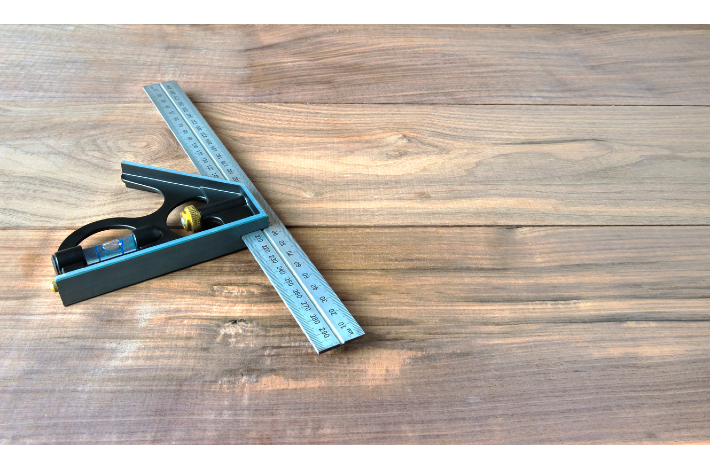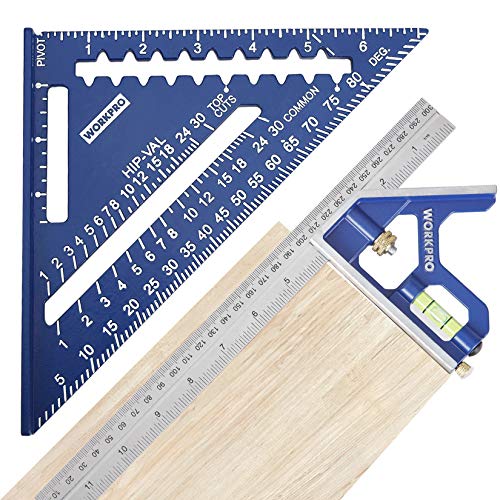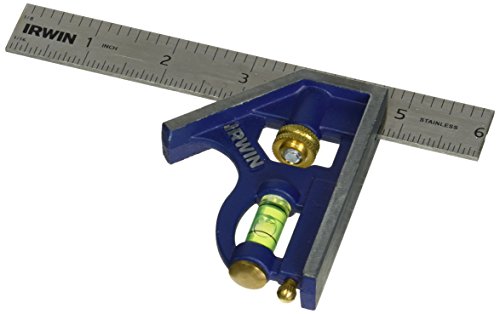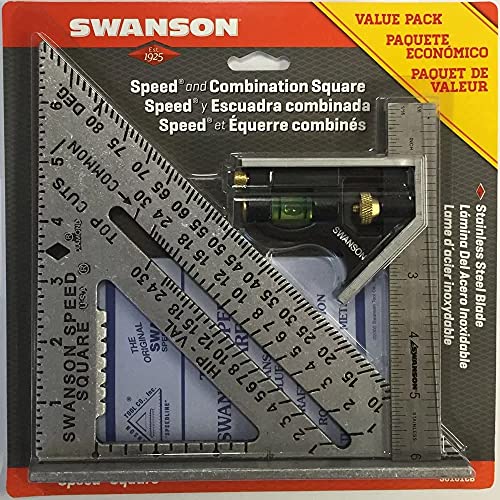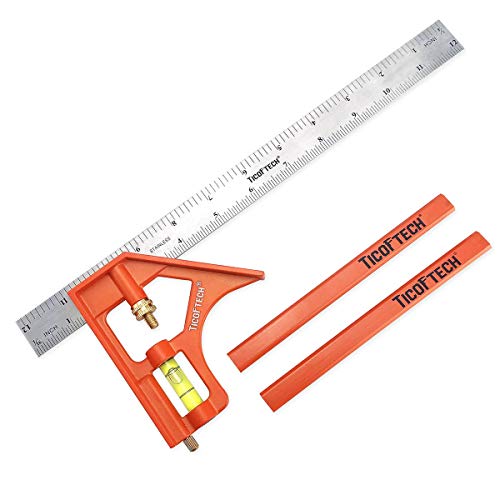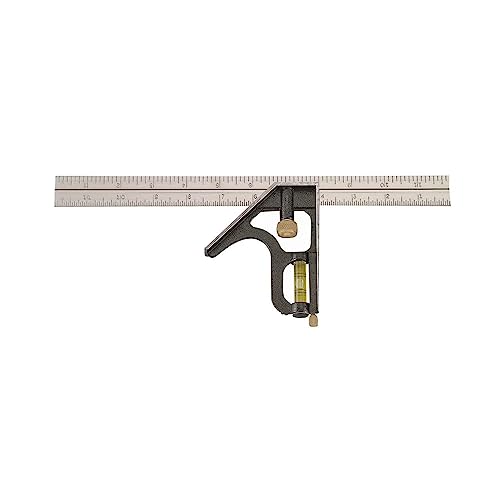- StoreProjects
- Free Plans and Projects
- Furniture Projects
- Jigs And Fixtures Projects
- Shop Projects
- SketchUp Models
- Shop Storage
- Workbenches
- Free Woodworking Downloads From Lee Valley
TechniquesToolsVideos- Premium Streaming Video Site
- Experts Guide to Gluing & Clamping Wood
- Mastering Built-In Furniture
- Simple Live-Edge Slab Table
- CNC – Designed for Woodworkers
- Milling Your Own Lumber
- Advanced Bandsaw Techniques
- I Can Do That! – Simple Woodworking Projects
- Woodwright’s Shop with Roy Underhill
- Tricks of the Trade
BlogOur content is meticulously curated through independent research, testing, reviews, and AI-driven recommendations, all designed to present you with the finest product choices. When you make a purchase through our links, it could result in us earning a commission.Get Precise With the Best Combination Squares
Last updated: 24 Jul 2024
From drawing technical sketches to joining pieces of wood, combination squares will always be a significant part of your toolkit. No matter how proficient you’ve become, uncertainties are always a possibility, especially if you try taking measurements on a DIY project without the right tool. We’ve researched and gathered the best combination squares on the market to help you pick the perfect one. During our research, we discovered the WORKPRO Rafter Combination Square and were impressed by its high-quality build and easy readability. To learn more about this product and others like it, be sure to read on and discover everything there is to know about these tools.
- Best Overall: WORKPRO Rafter Combination Square Shop Now ➔
- Best Value: IRWIN Tools Combination Square Shop Now ➔
- Most Compact: Swanson Speed Square Layout Tool Shop Now ➔
- Most Versatile: TICOFTECH 12-Inch Combination Square Shop Now ➔
- Most Precise Measurements: Johnson Level & Combination Square Shop Now ➔
View all ContentsThe Best Combination Squares
Best Overall
TheWORKPRO Rafter Combination Square managed to grab our “best overall” award, owing to uncompromising quality and durable construction. This combination ruler offers fantastic durability, granted by the use of zinc alloy, and will last for a long time. Also, it carries a sturdy ruler fabricated from stainless steel with a matte finish, adding to its strength and making it easy to slide while measuring. Thanks to the deeply etched markings engraved on the steel ruler, the numbers are clear and easy to read. This 12-inch ruler has three short markings divided into 1/16 inch, 1/32 inch, and 1 mm. The spring screw allows you to detach the ruler easily, and the built-in metal scriber and level vial offer extreme versatility.
Pros
- Easy-to-read numbers
- Long-lasting durability
- Sturdy construction
Cons
- More expensive than competitors
Best Value
When we talk about premium combination squares with perfect balance in price, value, and performance, the IRWIN Tools Combination Square is the perfect example. A stainless steel blade, integrated with the cast zinc body, provides extended durability and protects the product from rust. Additionally, deep markings carved on the ruler’s surface provide precise 45 and 90-degree readings, and the black paint makes them easy to read. On one side of the blade, you’ll find several imperial measurements as well as other metrics, making it versatile. A built-in scribing tool and a bubble level also help you spot the level with just a glance. Its 6-inch length also makes this a handy tool appropriate for DIY tasks.
Pros
- Rustproof blade
- Scribbing tool and bubble level
- Precise readings
Cons
- Square can come loose
Most Compact
If larger scales are overkill for your projects and are affecting the quality of your measurements, then the Swanson Speed Square Layout Tool can help you find balance and reliability. This 6-inch blade features imperial and metric measurements, allowing you to use whatever best suits your needs. Black etched markings make this compact combo square a breeze to read. Stainless steel construction ensures this product’s longevity and precision. These sturdy combination square sets have die-cast zinc that is highly rust-resistant and plays a significant role in fortifying the tool’s toughness. A built-in brass scriber and a heavy-duty level bubble make marking easy even when you can’t find a pencil. Additionally, a spring-loaded bolt keeps the stainless steel blade in place so angles won’t slip, causing you to lose accuracy.
Pros
- Impact resistance level
- Cost-effective woodworking tool
- Compact design
Cons
- Not suitable for large projects
Most Versatile
Whether taking measurements, marking spots, or transferring precise angles, TICOFTECH’s 12-inch combination square is an indispensable tool for workshops. A heavy-duty cast zinc body and rustproof steel blade offer resistance to most impacts. This multifunctional tool is not limited to use as a combo square but can also serve as a scriber, gauge, and spirit level.
This tool provides precise 45 and 90-degree angle measurements and is a handy indicator for transferring exact angles. Additionally, TICOFTECH provides dual side measurements in both 300 mm metric and 12-inch Imperial systems, making them some of the best combination squares for woodworking.Pros
- Optimized functions
- Highly flexible
- Both metric/inch ruler
Cons
- Tightening knob is sometimes hard to move
Most Precise Measurements
The Johnson Level and Sturdy Combination Square has a heavy-duty cast zinc head combined with a chip-resistant coating, making it capable of withstanding even the most rigorous workshop use. The auto-lock mechanism of the blade helps with aligning tools for use, and the screw-in scriber increases this product’s strength and convenience. The tool is a stainless steel blade with metric and English measurements engraved on its surface. The markings include ⅛ inch, 1/16-inch, and 1/32-inch in permanent ink to help prevent fading over time. The head of this metal square ruler has been processed with a CNC machine, improving precision. This feature makes it ideal for marking, as a depth gauge, a straightedge, a miter square, an adjustable try square, and more.
Pros
- Improved precision
- Chip-resistant coating
- Lightweight
Cons
- Sharp edges
Buying Guide: Combination Squares
Seeing all the options above, you can imagine the abundance of options available. However, there are some standard features you should look out for that can help you land on the exact right product for your particular needs.
Check out this detailed buying guide, helping you draw a clear picture of an ideal combination square in your mind, ensuring confidence in your purchase.
What Are Combination Squares?
Combination squares are versatile measuring and marking instruments used widely in woodworking, metalworking, and stone masonry. They include a detailed ruler and multiple interchangeable heads depending on the needs of a project. These are also known as sliding squares, combo squares, and adjustable squares.
The most common uses of these tools are:
- Distance measurements
- Finding depth
- Determining level accuracy
- Measuring the central points of circular objects
- Marking and testing 90-degree and 45-degree angles
Types of Combination Squares
Before considering essential features, understanding the types of combination squares can help with using them in a more versatile manner. Here are the basic types of combination squares you can use on different projects.
Squarehead
A “square head” is a standard type of combination square commonly used in workshops and construction sites. It has both 90 degrees and 45-degree edges, providing dual functions as both a miter square and a try square. Square heads are used for marking 90-degree angles, and miter squares are used for marking and referencing 45-degree angles.
Square heads are versatile and can also be used as depth and height gauges. Also, being on a spirit level allows it to check the level of surfaces.
Center head
The center, or centering, head allows you to find the center of the square and round objects like dowels. Marking multiple spots at different angles can help you with precisely determining the center point of objects. You can also use it with perpendicular angles on a curved edge. The edge has been molded in a v-shaped body, and a locking thumb nut is present near the endpoint.
The greatest advantage this provides is the blade fitting perfectly into the central point of a center head, sliding through it.
Protractor head
Protractor heads are widely used for measuring and examining angles between markings, edges, and surfaces. After fitting your blade with a protractor head, you can set any angle between 0 and 180 degrees. When used with center heads, protractor heads allow for finding central points and marking accurate angles from the main point.
This head can also directly transfer angles, minimizing measurement errors and uncertainties, just like a bevel gauge.
Factors To Consider With Combination Squares
This section is all about the indispensable features you should consider before making any purchase. Missing a single one of them may cost you your chance at achieving woodworking perfection.
Materials
The materials used reflect the quality of anything made, and if you are seeking a long-lasting combination square, good materials should be a special priority. The blade of a combo square is crafted either with stainless steel or hardened steel. Stainless steel has extreme rust resistance but is not as strong as hardened versions. On the other hand, hardened steel is much less likely to prevent rust and corrosion.
That’s why stainless steel is so prevalent in the market; however, if you want to opt for hardened steel, make sure it is chrome plated, providing resistance to rust and ensuring durability.
Most of the materials used for constructing combination squares are cast iron, high-impact polystyrene, and die-cast zinc. Plastic tools are also available and sold at a low price, but they keep degrading with time, especially when exposed to high temperatures. Die-cast zinc is in heavy demand because of its usefulness in preventing rust and maintaining accuracy. Premium combination squares fabricated with cast iron are the king of durability but need to be cleaned after each use to prevent rust.
Blade size
Combination squares might all come in one shape but they do have different sizes to choose from. The most common sizes are 4 inches, 6 inches, 12 inches, 16 inches, and 24 inches. Several sizes are the perfect backup to any situation and 12-inch combination squares offer the greatest versatility if you have to choose just one.
Markings
Most combination squares have metric and imperial markings etched on their surface. Different models of blades have graduation between 10R and 4R. However, blades with 4R graduation are an excellent fit for detailed markings of ⅛ inch, 1/32 inch, 1/16 inch, and 1/64 inch. Blades with 10R graduation have equal divisions of 1/10 inch.
Readability
Markings play a massive role in maintaining the longevity of a combination square. Painted markings are clear to read initially, but fade with general wear and tear. Measurements can become unclear over time if the square’s markings were etched by the same machine used for cutting its blade.
Etched machine markings are carved inside blades and won’t fade away quickly. Therefore, these markings are the best possible option for getting precise, clear, and reproducible readings.
Versatility
Combination squares are considered versatile woodworking tools because of their interchangeable heads. The standard head coming with any combination square is a “square head”. However, you can switch to a protractor head or a center head based on your project’s requirements.
If you’re working on a complex job requiring all these heads, it’s a good idea to purchase a sturdy set of combination squares. Plus, several models offer a spirit level and a scriber, offering even greater convenience and accuracy.
People Also Ask
What are some tips and tricks for extending the lifespan of combination squares?
Wiping it off after every use can increase a product's life by years. Cleaning it with rubbing alcohol, a nonabrasive scouring pad, or any lubricant can help prevent rust, extending the tool’s lifespan. Make sure to wipe off any lubricant after cleaning.
What is a try square used for?
Unlike a combination square, try squares are designed for measuring and marking at fixed 90-degree angles. Try squares ensure greater accuracy than combination squares because their blades are fixed rather than adjustable.
Is it necessary to have metric measurements on my combination square?
It depends on the intended purpose of your purchase. However, if you are unsure, most sliding squares feature both metric and imperial systems, covering you in any situation.
Article Contributors
Read More About Popular Woodworking Reviews Team HereThe Popular Woodworking Review Team’s product reviews and comprehensive guides are here to help you select the best gear and tools to efficiently complete top-quality woodworking projects.
Popular Woodworking is reader-supported: When you buy through links on our site, we may earn an affiliate commission. Artificial Intelligence (large language models) may have been used in the research and creation of the content.
Questions about product testing or a specific articles should be sent to aimperiapt@gmail.com

